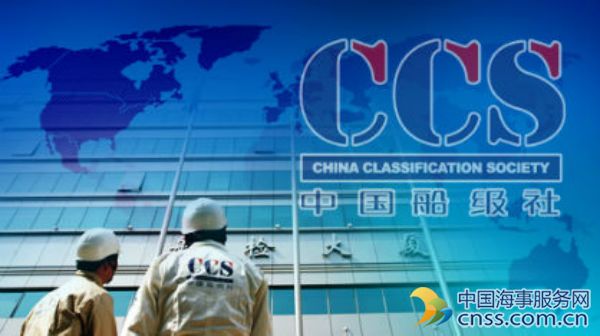船级社介绍 CLASSIFICATION SOCIETIES

INTRODUCTION 简介
The importance of Classification Societies to the shipping industry is well illustrated by the role they play in the sale and purchase of second-hand ships. Most buyers will rely upon the accuracy of the ship's classification records and upon the certificate typically provided at delivery confirming that the ship is in class, free from conditions or recommendations imposed by the ship's Classification Society.
船级社在航运行业的重要性,通过它们在二手船买卖中所扮演的角色得以充分地阐明。大多数买方会依赖的船级社记录的准确性,和在交接时提供的船舶标准证书,以确认该船舶保持船级,无船级(遗留)条件或无船级批注。
WHAT ARE CLASSIFICATION SOCIETIES? 什么是船级社?
Role of Classification Societies 船级社的职能
Classification Societies are independent commercial organisations staffed by marine surveyors who work with shipyards, shipowners, insurance companies and flag state authorities in matters relating to the design, construction, maintenance and repair of ships and other marine units. One of the principal objectives of the classification system is to enhance the safety of life and property at sea by securing high technical standards of design, construction and operational maintenance of mercantile and non-mercantile shipping. In relation to a second-hand ship, this objective is pursued through regular surveys by surveyors of the Classification Society with which the ship is entered to determine if the ship complies with the applicable rules of the Classification Society. The Classification Society will also carry out what are known as “statutory surveys” on behalf of the state with which the ship is flagged (the ship's “flag state ”) to determine if the ship complies with the national and international laws and regulations which the relevant state applies to ships sailing under its flag.
船级社是指,针对船舶和其它海上设施的设计、建造、维护保养和修理等有关事项,与船厂、船东、保险公司和船旗国主管机关协同工作,由海事验船师组织起来的独立的商业机构。船级制度的一个主要目标是通过确保高技术标准的设计、建造、商业性航运生产维护和非商业海运生产(部件)保养,以提高海上生命和财产的安全。有关于二手船,如果船舶满足船级社的适用的规则标准,由船舶所选的船级社的验船师定期检验来执行这一目标。船级社也可以代表船旗国进行所谓的‘法定检验’,以确定该船旗国航行的船舶是否符合该船旗国适用的国家和国际相关的法律法规。
Although class rules, practices, technical standards and their application vary from Society to Society, the major Classification Societies who are members of the International Association of Classification Societies (“IACS”) seek to harmonise their objectives and rules and so raise their practices and standards.
虽然各个船级社规则,规范,技术标准及应用程序变化不同,作为‘国际船级社协会组织’(IACS)的成员,各大船级社试图协调统一它们目标和规则,以此而提高他们的规范和标准。
IACS defines a Classification Society as:
“… an organisation which:
(i) publishes its own classification Rules (including technical requirements) in relation to the design, construction and survey of ships, and has the capacity to (a) apply, (b) maintain and (c) update those Rules and Regulations with its own resources on a regular basis;
(ii) verifies compliance with these Rules during construction and periodically during a classed ship's service life;
(iii) publishes a register of classed ships;
(iv) is not controlled by, and does not have any interests in, shipowners, shipbuilders or others engaged commercially in the manufacture, equipping, repair or operation of ships; and
(v) is authorised by a Flag Administration as defined in SOLAS Chapter XI-1, Regulation 1 and listed accordingly in the IMO database, Global Integrated Shipping Information System (GISIS).”
IACS船级社的定义为:
‘……一个机构组织:
(i). 颁布自己的船级规则(包括技术要求),其内容是关于船舶设计、建造和检验,并有能力利用自己的资源按照一定的制度(a) 实施、(b)维持和(c)更新这些规则和章程;
(ii). 在船舶建造期间检查是否符合这些规则,并在入级服务期间,定期进行核实;
(iii). 发布入级船舶的登记注册名单;
(iv). 不受船东、造船厂或其它从事船舶制造、装备、修理或运营的商业化公司的控制的,也没有利益参与。 (v). 由SOLAS公约第11章第1部分第1条定义的旗政府机关授权,并且相应地列入IMO数据库(全球综合航运信息系统-GISIS)的名单之中。[1]
At the time of writing, there are 13 full members of IACS:
l American Bureau of Shipping (“ABS”)
l Bureau Veritas
l China Classification Society
l Croatian Register of Shipping
l Det Norske Veritas
l Germanischer Lloyd
l Indian Register of Shipping
l Korean Register of Shipping
l Lloyd's Register
l Nippon Kaiji Kyokai (“NKK”)
l Polish Register of Shipping
l Registro Italiano Navale and
l Russian Register of Shipping
在本书写作之际,国际船级社协会有13个正式成员:
(1). 美国船级社(ABS)
(2). 法国国际检验局(BV)
(3). 中国船级社(CCS)
(4). 克罗地亚船级社
(5). 挪威船级社(DNV)
(6). 德国劳氏船级社(GL)
(7). 印度船级社
(8). 韩国船级社(KR)
(9). 劳氏船级社(LR)
(10). 日本船级社(NKK)
(11). 波兰船级社
(12). 意大利船级社(RI)
(13). 俄罗斯船级社
注:挪威船级社和德国劳氏船级社已于2014年12月21日合并成DNV GL
Although there are about 50 Classification Societies operating around the world, IACS members are responsible for classifying over 90% (by tonnage) of the world's merchant fleet, and most ship financiers will require their shipowner borrowers to class their ships with IACS members.
虽然在世界各地有大约50个船级社在经营,但,IACS的成员掌握着世界商业船队的(按船舶吨位计)90%以上的入级船舶,并且大多数的船舶融资人都将要求其借款人的船东在IACS成员入级。
THE CLASSIFICATION SYSTEM 船级制度
What does classification mean? 船级社的含义
Ship classification dates back to the second half of the eighteenth century when ship captains and officers were employed to look over ships and report back to prospective underwriters at Lloyd's so that appropriate terms of insurance cover could be drawn up. Lloyd's Register, the first Classification Society, produced its first set of technical “rules” for the construction of ships in 1800.
船舶的船级社制度可以追溯到18世纪后半叶,当时开始雇佣船长和高级船员看管船舶,并向劳合社潜在的保险人报告船舶的状况,以期拟定适当的保险条款。[2] 在1800年,第一个船级社,劳氏船级社出版了第一套船舶建造技术‘规则’。[3]
When a ship is first classed, the relevant Classification Society will issue a certificate recording the character symbol or class rating assigned to the ship. Thereafter, surveyors of that Classification Society will survey the ship at regular intervals to determine if the ship continues to comply with the rules and other requirements of the class rating assigned to her. After carrying out a class survey, the surveyor will record that the survey has been performed and confirm either that the ship remains “in class” or that the shipowner must take certain action within a specified time frame in order to remedy damage or defects noted by the surveyor.
当船舶首次入级,相关船级社将颁发记录船舶特征符号或船级社授予船舶等级的证书。此后,该船级社的验船师将定期检验船舶以确定该船舶持续遵守船级社的规则和船级社的其它等级要求。在进行船级社的检验后,验船师将记录船舶完成检验并确认该船舶仍然保持‘在级’,或者,在规定的时间期限内,船东必须采取一定的行动修理验船师指出的船舶损坏或缺陷。
The most stringent of these class surveys, known as the hull and machinery special survey, becomes more exacting as the ship ages with particular focus on corrosion and structural fatigue since usually they will be the main threats to a ship's structural soundness. Typically, the scope of a special survey will include extensive visual checks of the ship's structure (including her tanks and bulkheads) and ultrasonic gauging to measure the steel thickness of the ship's hull and other structural parts.
最严格的船级检验,是所谓的船体和机械的特殊检验,随着船龄增加,检验变得更加严格。特别集中在船舶腐蚀状况和结构疲劳,因为它们通常是船舶结构安全的主要威胁。典型的特殊检验范围将包括船体结构广泛的目视检查(包括舱室和舱壁)和超声波仪器测量船体和其它结构部件的钢板厚度。
When a ship is said to be “in class”, this means two things: first, that at completion of the last periodical survey by the Classification Society with which the ship was entered, the Society was satisfied that the ship was then in compliance with the applicable rules and other requirements of the Society; and second, that with proper maintenance – and excluding accidents – the ship should remain in compliance with such rules and requirements until commencement of the next scheduled periodical survey.
当谈到船舶‘在级’时,这意味着两件事情:第一,完成船舶将入级的船级社要求的最后一个定期检验,该船级社确信该船舶当时符合船级社适用的规则和其他要求;第二,通过适当的维护——不包括意外事故——船舶应持续遵守这些规则和要求,直到开始下一个预定的定期检验。
But prospective buyers should be aware that the classification system has its limitations. In an ideal world all shipowners would apply high standards of inspection, maintenance and repair; promptly notify all relevant breakages, damages, defects and incidents to their Classification Society; arrange for their ships to be surveyed by Class at regular intervals and otherwise comply strictly with Class rules. A prospective buyer should then be able to determine, by reference to the ship's class records, where the ship is in her survey cycle and what items would fall due between delivery to them under the sale contract and the date of the next scheduled survey.
不过,潜在的买方应当注意到船级社制度也有其局限性。在一个理想的世界,所有的船东都将适用高标准的检查,维护/保养和修理;及时将所有相关的破损,损坏,缺陷和事故立即通知自己的船级社;安排他们的船舶定期进行船级检验并在其他方面遵守严格的船级规则。参照该船舶的船级记录,在船舶按照买卖合同交付之后到下一个检验周期之间,潜在买方应当能够确定,船舶在何处进行循环检验和哪些项目即将到期。
But in the real world shipowners do not always maintain and repair their ships as they ought, and they are not always honest and open with their Classification Society in the sense that they do not always notify their Classification Society of all breakages, damages, defects and incidents that should be reported. Prospective buyers should therefore have realistic expectations about the true worth of classification records and the extent to which they can be relied upon as an accurate guide to the condition of a ship. Classification does not constitute a guarantee that proper technical standards are maintained at all times, or that the ship is free of significant damage or defects that may have a bearing on her structural soundness, or even that the ship in question is seaworthy.
但在现实世界,船东并不会总是像他们应当做到的那样保养和修理他们的船舶,而且他们对船级社并不总是诚实的和坦率的,在某种意义上说,他们并不总是将所有应当报告的破损,损坏,缺陷通知船级社。因此,潜在买家应当真正切实预期船级记录的真正价值,以及若作为船舶状况的准确指引,其可以信赖的程度。船级社并不等同于担保船舶始终保持适当的技术标准,或该船舶无显著的损坏或可能与她的结构安全有关重大缺陷,甚至是该船舶是否适航。
In addition, shipowners and prospective buyers should keep in mind that each classification survey will be limited by the purpose for which it is carried out. When a Classification Society surveyor surveys a ship that is entered in the Society, he will be checking for compliance with the Society's rules and other requirements for the type of ship in question, and not for other condition-related matters that could be of interest or concern to the shipowner or a prospective buyer of the ship, and the surveyor will not be obliged to draw non-classification matters to the attention of the ship's owner.
此外,船东和潜在的买方应当铭记,每一次船级检验都因其目的不同而有一定的限制。当船级社的验船师检验已经入级的船舶时,他会检查是否符合船级社的规则和对此类型的船舶制定的其他要求,而不是船东或船舶潜在的买方感兴趣或关注的其它与船舶状况有关的事项,因此,验船师将没有义务提醒船东注意非船级有关的事项。
[1] 请访问IACS的网址www.iacs.org.uk以及附录1。
[2] 船级制度可以追本溯源到大约1760年,当时从事‘海上冒险航程’的人士聚集在伦敦著名的爱德华▪劳埃德咖啡馆商议得来。
[3] 最早的船级等级是由劳氏验船师采用元音字母‘AEIOU’描述船体状况并用字母1-4规范船舶属具的级别而发展起来的。术语‘A1’(劳氏船级社检验的船舶获得的最高等级)已经成为著名的英语习惯用语。









